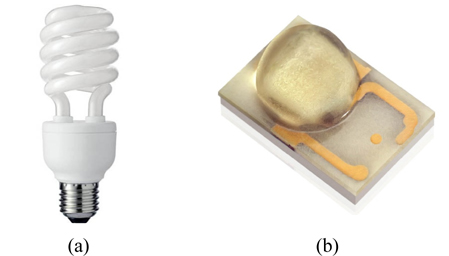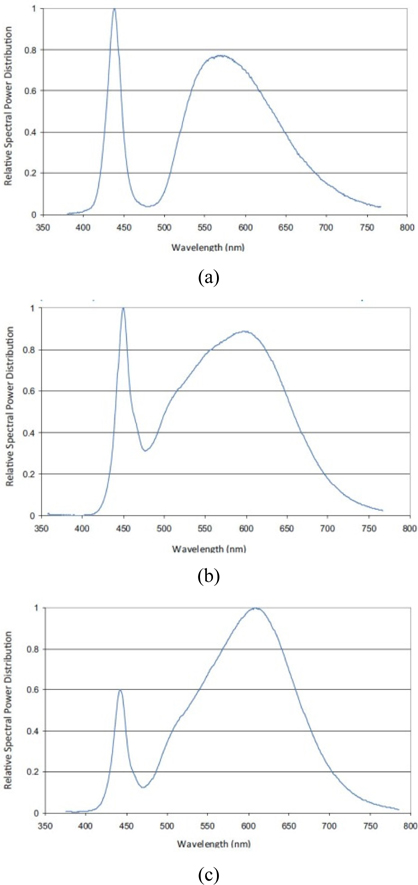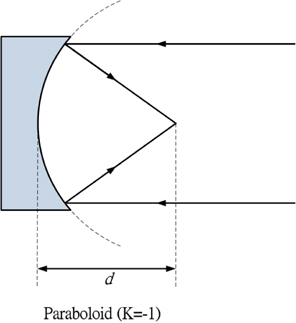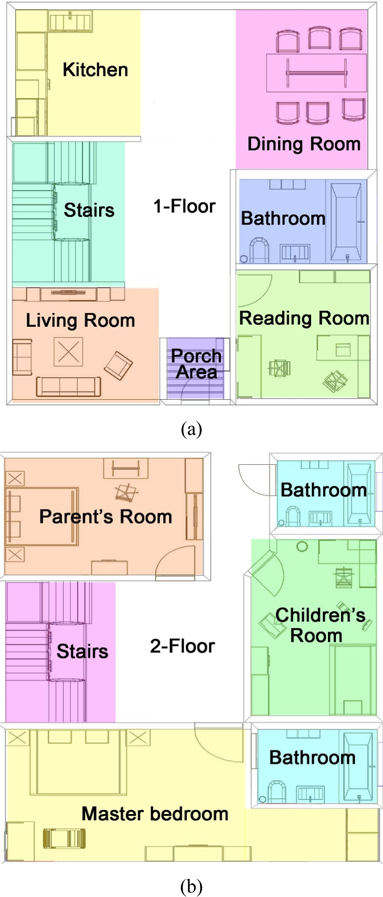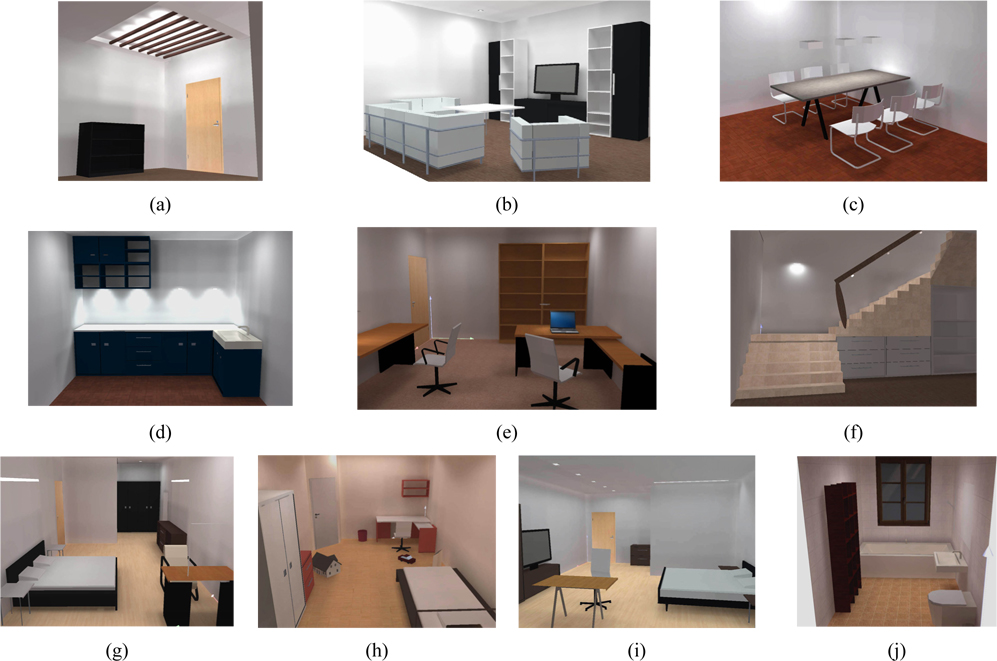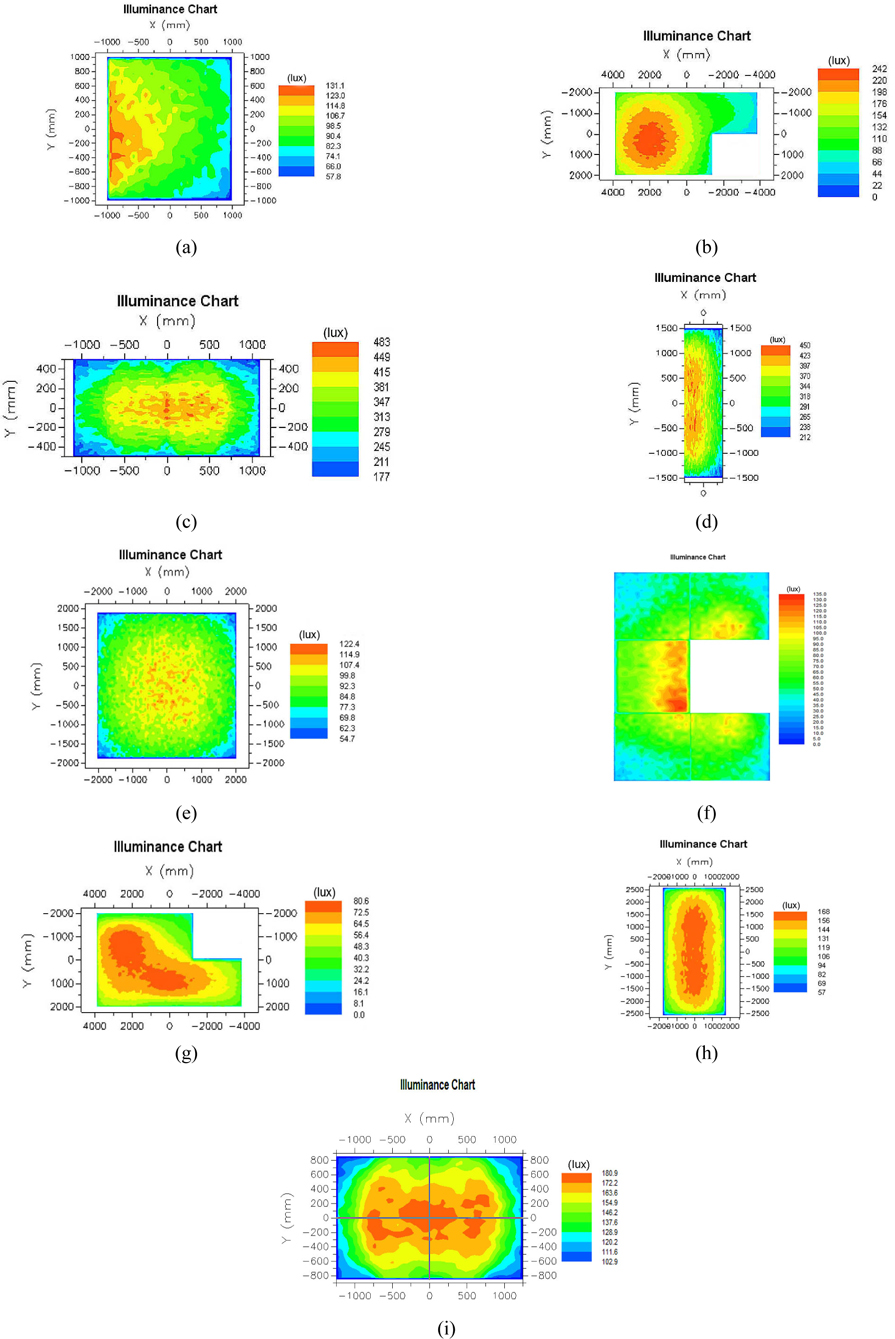



Although fluorescent lights are often used in our daily life, they still have some problems, such as short lifetime, excessive power consumption, and mercury pollution [1]. To solve these problems, we must try to develop more environmentally-friendly light sources. One of the most promising types for future development is light emitting diodes (LEDs).
Rapid improvement of the efficiency of high power LEDs has been made during these past several decades leading to a wide variety of LED applications, giving us different visions in lighting design. The current advantages of LEDs mean that they can now surpass traditional light sources [2]. Furthermore, updated legislation which demands consideration of the environmental impact of a product over its life cycle, from production to disposal, makes LEDs the ideal candidate for an environmentally-friendly light source [3]. Already, numerous tiny glowing LED indicators are utilized in modern households for transmitting signals or information from electronic equipment [4]. Increasingly, automobiles are also being equipped with LED indicators and brake lights. Recently LED head lights have been designed for use in concept cars [5], and rapid improvements in white LEDs, such as for street lights, have been made in the worldwide multi-billion dollar lighting market. These changes and the worldwide development of LED based illumination systems should make it possible for LEDs to be used in interior household illumination in the near future [6-11].
During the past several decades, fluorescent lights have become commonly used for daily illumination. The luminaires for fluorescent light vary. The most commonly used in our households are twist-style compact fluorescent lamps. In addition, the development of LED techniques means that traditional illumination sources such as fluorescent lamps are no longer suitable. This is the reason we make a comparison between the twist-style compact fluorescent lamps and white-light LEDs.
Two kinds of different light sources that represent two different generations of development are described below. A Philips HELIX 23W CDL twist-style compact fluorescent lamp (with 23W and 1450 lm performance) and a HELIX 23W WW twist-style compact fluorescent lamp (with 23W and 1550 lm performance) are both commonly used as single light sources for general household illumination. These two twist-style compact fluorescent lamps are the same in appearance, as shown in Fig. 1(a). In this study, we simulated three different LEDs for lighting the same household environment. The performance of these different LEDs is described as follows: one is the Lumileds LXML-PW51; another is the Lumileds LXM3-PW51; the other is the Lumileds LXM3-PW71. In appearances they are the same as shown in Fig. 1(b). The relative spectral power distributions of these three LEDs are shown in Fig. 2. All of the parameters for these light sources are listed in Table 1[12]. If the value of R9 is too low or is negative, then its value is not listed. The reasons for choosing Philips compact fluorescent lamps and Lumileds LEDs for the household lighting simulation are their low market price, low power consumption, high luminous flux, suitable correlated color temperature (CCT) and high color rendering index (CRI).
[TABLE 1.] Parameters of the three different LEDs and two fluorescent lamps
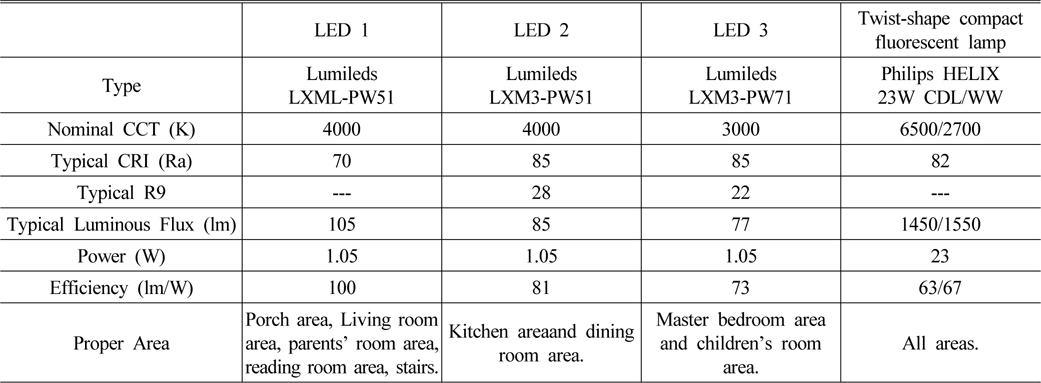
Parameters of the three different LEDs and two fluorescent lamps
As a consequence of the time that they became available in the lighting market, these twist-style compact fluorescent lamp and LEDs were used in the simulation and comparison for household illumination. We were able to obtain the candle power distribution profiles from the Philips Lumileds website and used the profiles to simulate the household illumination with different types of reflectors with the LightTools optical design software.
The reflector is simply a device, like a mirrored reflected plane, used to alter the path of the light trace. Reflectors play an important role in a lighting system. In this work, all the home lighting fixtures are designed by using parabolic reflectors, as shown in Fig. 3. Given the parabolic reflector design, the distance
Regarding the spatial model in the case study, a two floor house was chosen to simulate the household illumination. The layout may vary with a porch area, a living room, a reading room, a dining room, and a kitchen located on the first floor. All bedrooms including the master bedroom, children’s room, and parent’s room are placed on the second floor. Other spaces such as the bathroom and stairs are also considered. The dimensions of the vertical views of all different areas are shown in Fig. 4. Therefore, different correlated color temperatures (CCT) and color rendering indices (CRIs) are also investigated and suited to different household illumination environments.
2.4. Correlated Color Temperature (CCT) and Color Rendering Index (CRI)
The market price, power consumption and luminous flux of the light source are all easily available to the general consumers, but the CCT and CRI are not. Consumers are often concerned about the price and power consumption, but most do not consider the correlated color temperature or what a color rendering index is. The CCT is a characteristic of visible light that is becoming more and more important in indoor lighting in recent years. The CCT of a light source is the temperature of an ideal black-body radiator that radiates light of comparable hue to that of the light source. Color temperature is conventionally stated in units of absolute temperature, the Kelvin, having the unit symbol K. The related present color is shown in the CIE chromaticity diagram [14]. Consider for example, consumers might want their living room design to have a feeling of warmth, meaning a lower CCT light source could be used to light this kind of warm space. Illumination with low CCT brings a warm feeling to the environment; on the other hand, illumination with high CCT brings a cool feeling [15, 16].
The CIE color rendering index (CRI) is a method to determine how well a light source’s illumination compares to the illumination provided by a reference source, such as black body radiation, defined as having a CRI of 100. Incandescent lamps have a rating almost the same as black body radiators. The best possible faithfulness to a reference is specified by a CRI of one hundred, while the very poorest is specified by a CRI of zero. The color of the illuminated object will completely reappear when the CRI of a light source reaches 100; otherwise, the reappeared color will be decreased [17, 18]. In kitchens, for example, the CRI is an important index for the evaluation of the appearance of food, for social interaction, and for complementing decorative finishes. That means that the higher the CRI of LEDs that can be used for lighting this kind of colorful space, the better its rendering ability for making fish, vegetables and fruits look fresh and delicious. Thus, the CRI and the CCT give a numerical estimate of which ideal light source best approximates a particular artificial light, and what the difference is.
After building the light source models, we build the spatial model of the study area. It includes a porch area, a living room, a dining room, a children’s room, a parents’ room, a reading room, a master bedroom, a kitchen, a bathroom and the stairs area. Considering the different purposes of the different areas, we designed different light sources for household lighting, following the required Chinese National Standards (CNS) [19]. Then, we simulated the household lighting with general twist-style compact fluorescent lamps and LEDs, on a case by case basis. The simulated average illuminances and the required standard average illuminances for different areas are listed in Table 2. The simulation results all met the required standards.
[TABLE 2.] Illuminance of different areas inside the house model
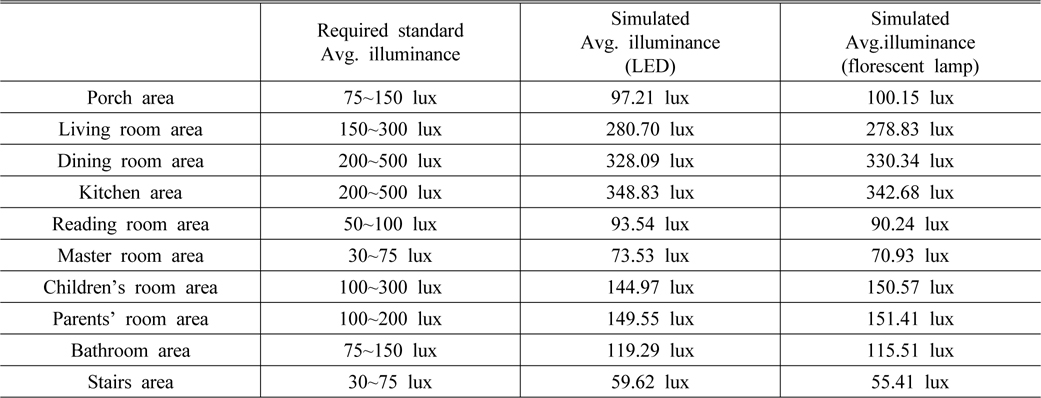
Illuminance of different areas inside the house model
The Lumileds LXML-PW51, which has a high luminous flux, was chosen for lighting those spaces where people meet together, where older people might need a brighter environment or where more light is needed to read. This type of light was used in areas such as the porch area, living room, parents’ room, reading room and stairs. The Lumileds LXM3-PW51, which has a higher CRI, was chosen when it was important to make things looks more colorful or make food look more appealing such as in the kitchen and dining room. The Lumileds LXM3-PW71, which has a warmer CCT, was chosen for comfortable areas such as the master bedroom, children’s room and bathroom.
In the simulation, the same required standard illuminance is utilized for every area. Given this we calculate and compare the electrical power consumption of twist-style compact fluorescent lamps and LEDs used in different household lighting environments. The energy consumption for lighting by a single twist-style compact fluorescent lamp is 23W while the consumption for lighting of a single LED is 1.05W. The calculated power consumption of LED illumination is less than that of twist-style compact fluorescent lamps. Table 3 describes the use of home lighting white LEDs and fluorescent light sources, which used in various fields with fluorescent and white light LED quantity numbers, and shows the percentage of area power consumption over total power consumption.
[TABLE 3.] Power consumption for different light sources for the same illuminance standard
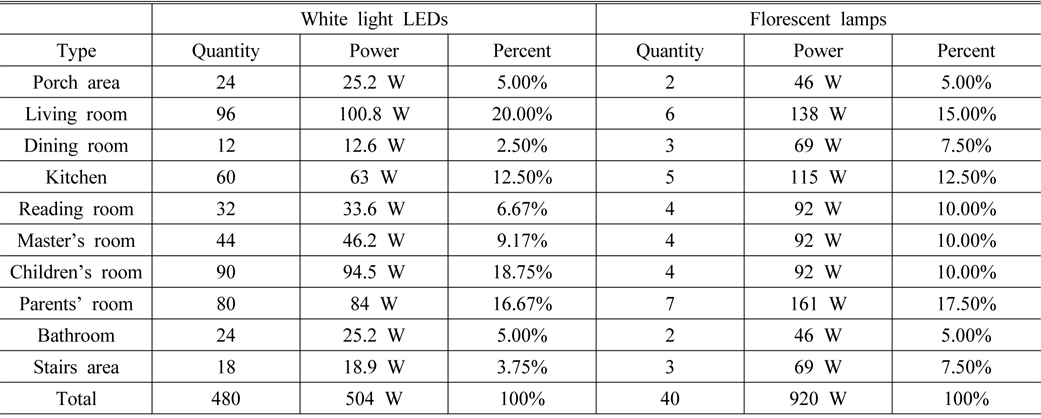
Power consumption for different light sources for the same illuminance standard
3.3. Simulation Results by using DIALux and LightTools
By using these LED designs for every room area, we use DIALux and LightTools simulation tools. DIALux and LightTools have the advantages of combining the human factors and quantitative simulation. We used a complementary method to design household illuminations, and the proposed approach was effective and feasible for the home lighting design. Fig. 5 shows the 3-D lighting in different areas by using the DIALux software. DIALux software can offer the feeling of color temperature in the environment and realistic visualizations. In the human factors aspects, DIALux is a better simulation software. Figure 5(a) shows the porch lighting design which consists of 24 LED 1 to be a whitish (CCT = 4000K, CRI = 70) light source. Figure 5(b) illustrates the living room lighting design which consists of 96 LED 1 to be a whitish (CCT = 4000K, CRI = 70) light source. Figure 5(c) shows the lighting design of the dining room which consists of 12 LED 2 to be a whitish (CCT = 4000K, CRI = 85) light source. In order to increase the appetite, we selected a high color rendering light source. Figure 5(d) illustrates the lighting design of the kitchen area which consists of 60 LED 2 to be a whitish (CCT = 4000K, CRI = 85) light source. Figure 5(e) shows the reading room lighting design which consists of 32 LED 1 to be a whitish (CCT = 4000K, CRI = 70) light source. Figure 5(f) shows the lighting design of the stair area which consists of 18 LED 1 to be a whitish (CCT = 4000K, CRI = 70) light source. Figure 5(g) shows the lighting design of the master bedroom which consists of 44 LED 3 to be a yellowish (CCT = 3000K, CRI = 85) light source. In order to increase the appetite, we select a high color rendering light source. To enhance the romantic atmosphere, we select a yellowish light with high color rendering index. Figure 5(h) shows the lighting design of the children’s room which consists of 44 LED 3 to be a yellowish (CCT = 3000K, CRI = 85) light source. Figure 5(i) shows the lighting design of the parents’ room which consists of 80 LED 1 to be a whitish (CCT = 4000K, CRI = 70) light source. Figure 5(j) shows the lighting design of the bathroom which consists of 24 LED 2 to be a whitish (CCT = 4000K, CRI = 85) light source.
Figure 6 illustrates the illuminance distributions of every room area which is simulated by LightTools software. LightTools software calculates the values of illuminance in more detail, thus the simulation is more accurate in the quantitative aspects. Figure 6(a) shows the porch lighting design which consists of 24 pieces LED 1, the output power of 25.2 W, output flux of 2400 lm, illumination area of 2 m × 2 m. Most of the illuminance distribution is 74.1 lx to 131.1 lx, and the porch lighting design meets the illuminance standards in the range of 75 lx to 150 lx. Figure 6(a) shows the living room which consists of 96 pieces LED 1, the output power of 100.8 W, output flux of 10080 lm, illumination area of 8 m × 4 m. The illuminance distribution of living room lighting design is from 110 lx to 242 lx. The living room lighting design is close to the illuminance standards in the range of 150 lx to 300 lx. Figure 6(c) illustrates the dining room lighting design which consists of 12 pieces LED 2, the output area of 2 m × 1 m. Most of the illuminance distribution is 211 lx to 483 lx. The dining room lighting design meets the illuminance standards in the range of 200 lx to 500 lx. Figure 6(d) shows the kitchen area lighting design which consists of 60 pieces LED 2, the output power of 63 W, output flux of 5100 lm, illumination area of 3 m × 0.75 m. The illuminance distribution is 212 lx to 450 lx. The kitchen lighting design meets the illuminance standards in the range of 200 lx to 500 lx. Figure 6(e) indicates the reading room lighting design which consists of 32 pieces LED 1, the output power of 33.6 W, output flux of 3360 lm, illumination area of 4 m × 4 m. The reading room requires an auxiliary lamp on the desk and other places do not require excessive lighting. The illuminance distribution is 54.7 lx to 122.4 lx. The reading room lighting design is close to the illuminance standards in the range of 50 lx to 100 lx. Figure 6(f) illustrates the stair area lighting design which consists of 18 pieces LED 1, the output power of 18.9 W, output flux of 1890 lm. The illuminance distribution is 30 lx to135 lx. The stair area design is over the lighting standards in the range of 30 lx to 75 lx. Figure 6(g) shows the master bed room lighting design which consists of 44 pieces LED 3, the output power of 46.2 W, output flux of 3388 lm, illumination area of 8 m × 4 m. The master bedroom lighting requirements are not very high and other places do not require excessive lighting. The illuminance distribution is 32.2 lx to 80.6 lx. The master bedroom design is close the lighting standards in the range of 30 lx to 75 lx. Figure 6(h) shows the children’s room lighting design which consists of 90 pieces LED 3, the output power of 94.5 W, output flux of 6930 lm, illumination area of 5 m × 3 m. Most of the illuminance distribution is 94 lx to 168 lx, and the children’s room design meets the lighting standards in the range of 100 lx to 300 lx. Figure 6(i) shows the parents’ room lighting design which consists of 80 pieces LED 1, the output power of 84 W, output flux of 8400 lm, illumination area of 2.5 m × 1.6 m. The illuminance distribution is 102.9 lx to 180.9 lx. The parents’ room design meets the lighting standards in the range of 100 lx to 200 lx.
3.4. Twist-style Compact Fluorescent Lighting
As regards the present lighting situation for the general populace, PHILPS HELIX 23W CDL/WW is commonly used for lighting all areas. The required standard illuminance is also strictly followed in the simulation process. Based on the same CRI performance of these two fluorescent lamps, we only consider the required conditions of luminous flux and CCT at different lighting environments.
In this study, we simulated and analyzed twist-shape compact fluorescent lamps and LED light sources for use in household illumination. The simulations show the most advantageous LED lighting design and its benefits compared with a traditional twist-style compact fluorescent lamp in household lighting given the same required standard of illuminance. In addition, the LightTools and the DIALux simulation tools allowed us to easily simulate the illuminance and 3-D virtual reality. In the human factors aspects, DIALux software offers a more realistic simulation. LightTools can calculate the values of illumination in more detail, thus the simulation is more excellent in the quantitative aspects. Finally, we point out the possibility of using LED designs for accurate illumination applications.
